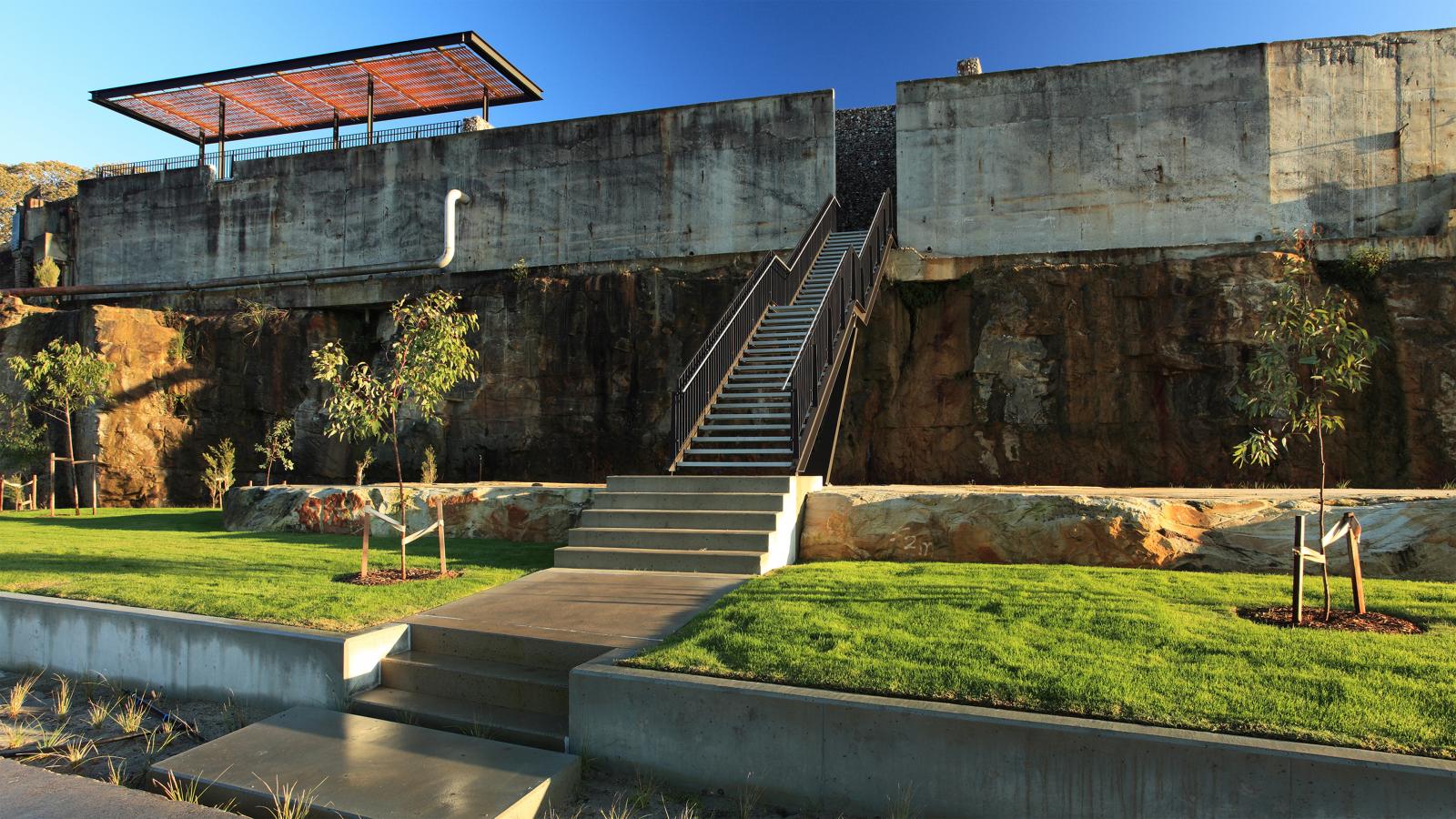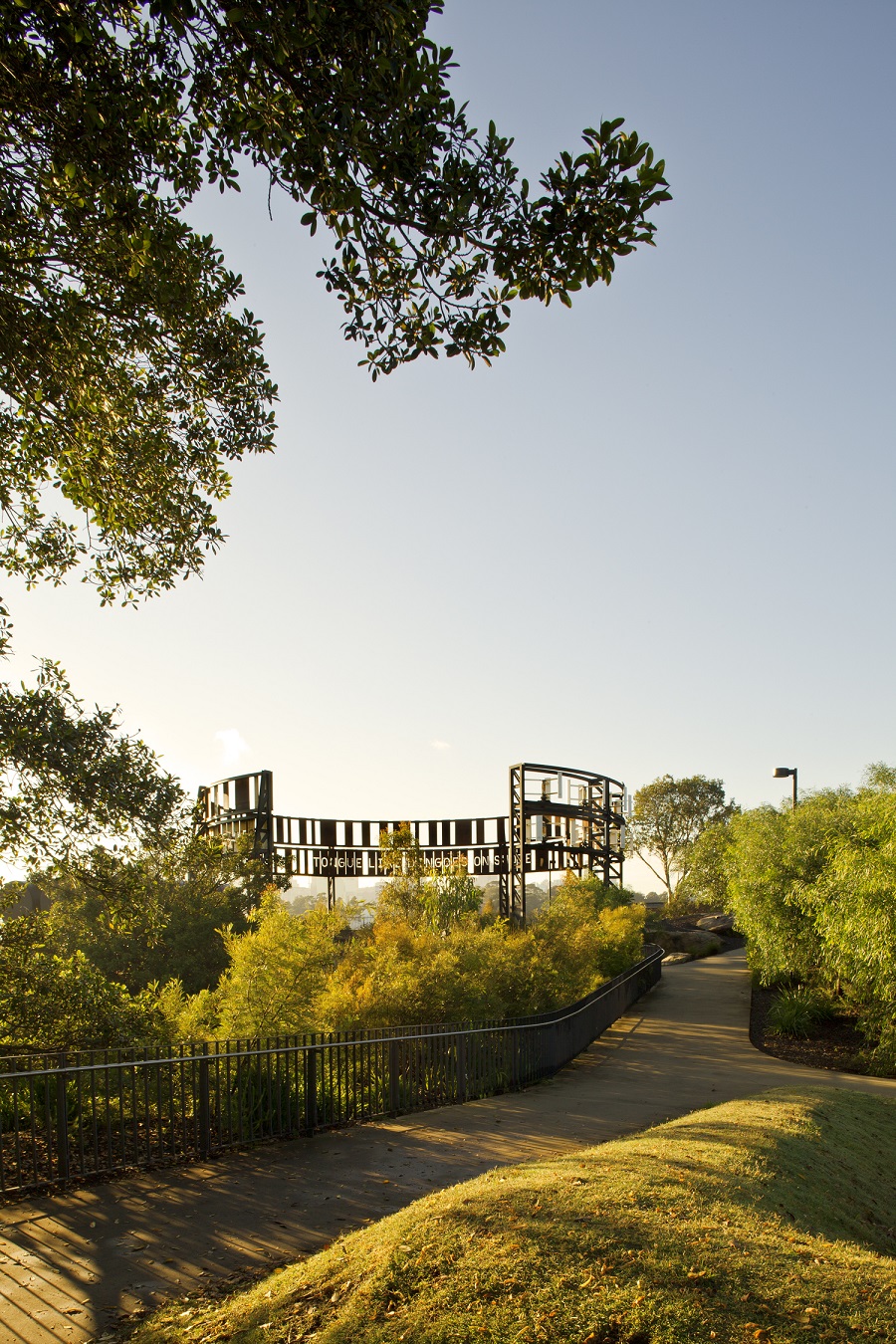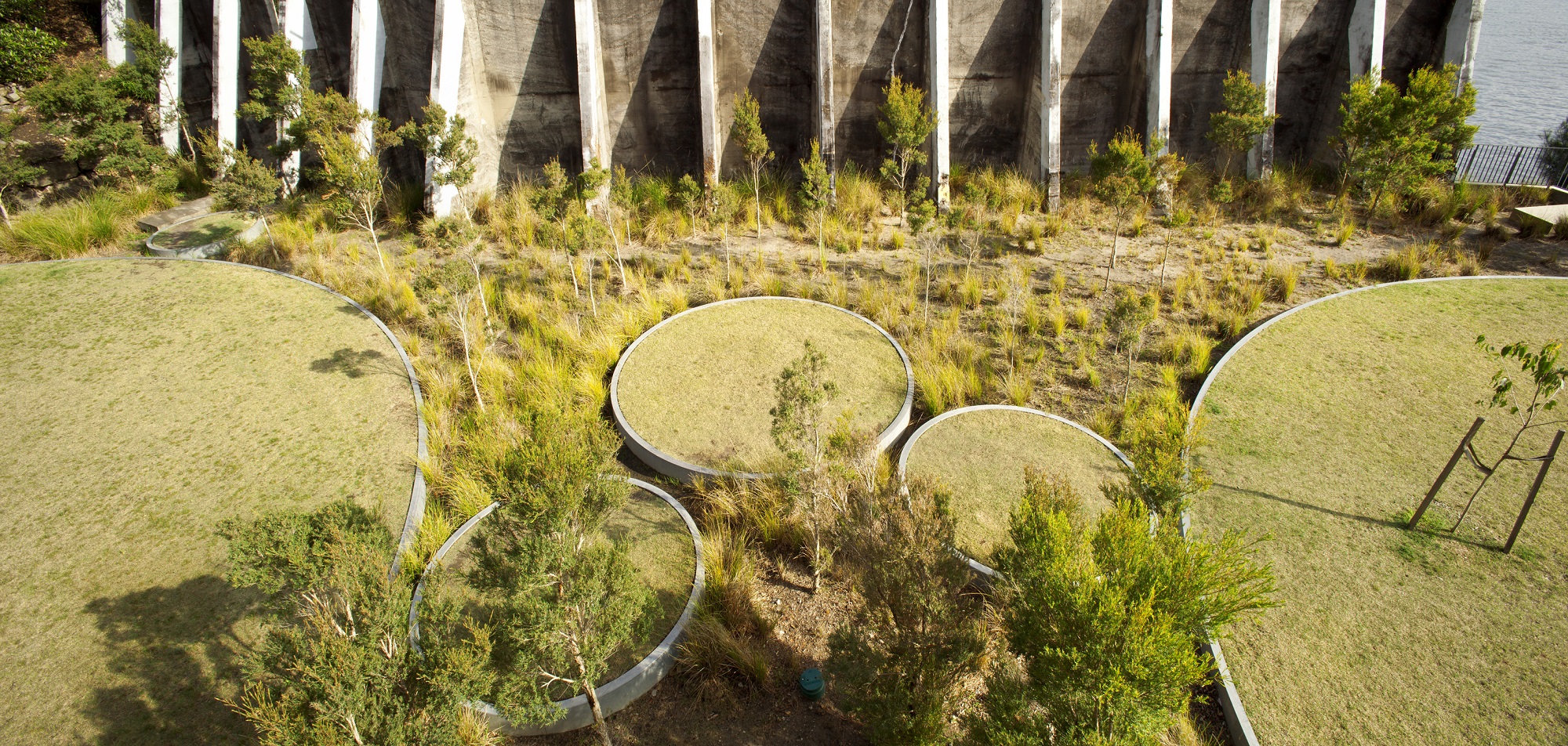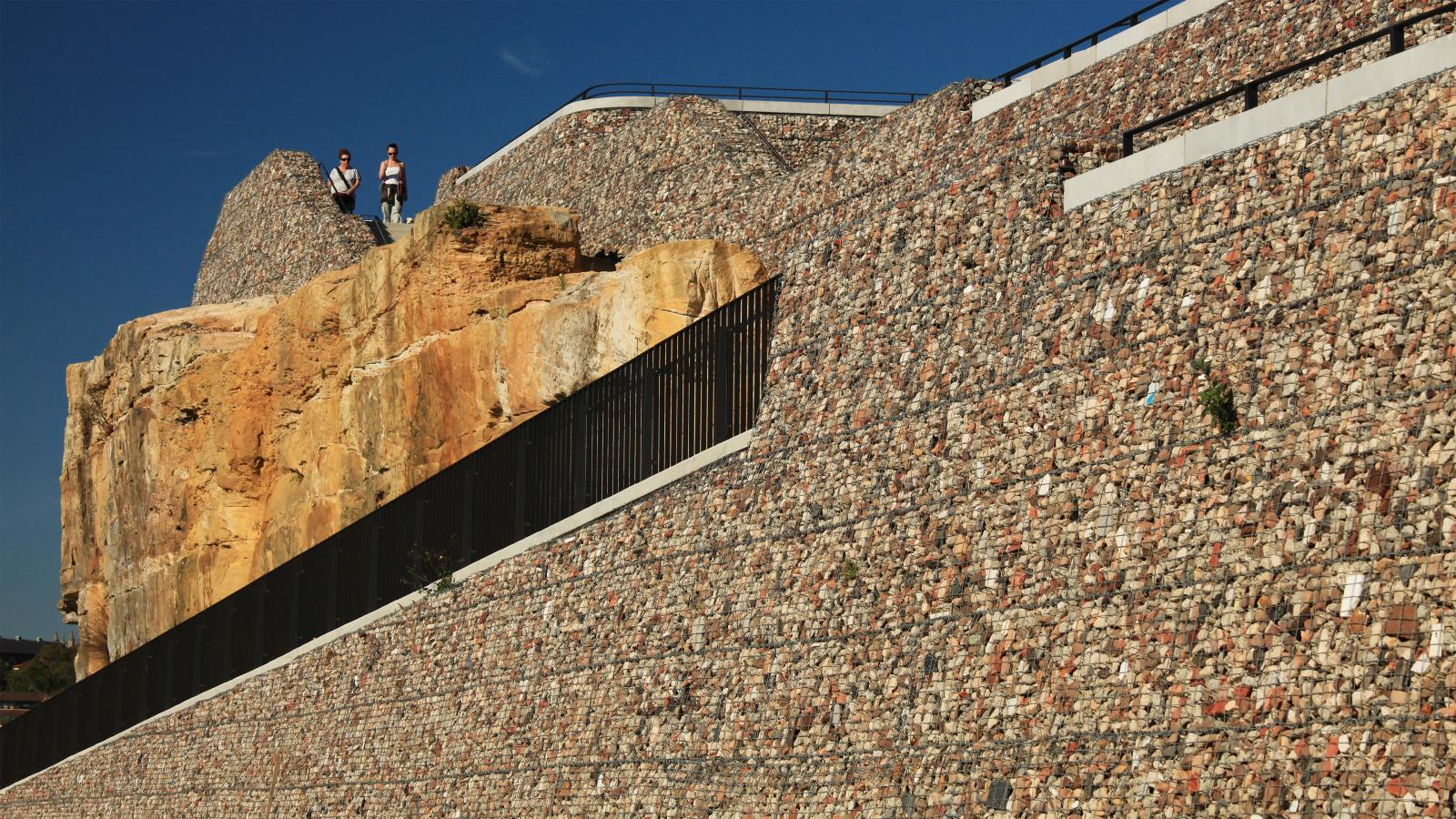Aug 01 2020, by Fleetwood Urban (Marketing)
Ballast Point Park
Where? Birchgrove Peninsula
Design Team? McGregor Coxall
Client? Sydney Harbour Foreshore Authority
Opened? 2009
When the Sydney Harbour Foreshore Authority acquired a contaminated former lubricant production site at Birchgrove, it wanted to transform the 2.5-hectare foreshore into an iconic new public space. Perhaps unsurprisingly, they turned to McGregor Coxall following their acclaimed work several years earlier at the former BP terminal on the opposite side of Sydney Harbour. It turned out to be an award-winning encore performance, worthy of any virtuoso. (Even if those darn wind turbines still don’t work.)

Project Outline:
A history-steeped 2.5ha waterfront on the Birchgrove Peninsula overlooking Sydney Harbour, Ballast Point spent many years as a quarry used for sourcing ship ballast, before operating as a petroleum production facility for over 75 years. When decommissioned by Caltex in 2002, the Sydney Harbour Foreshore Authority seized the opportunity to create a lasting community legacy, with a public tender to transform the former industrial site. Following their success with a similar project at Waverton on the opposite side of the Sydney Harbour at Waverton, McGregor Coxall was chosen as lead consultant, undertaking project management, design development, construction documentation and administration of the construction contract.
The design vision was driven by a strong environmental agenda where existing materials were repurposed and recycled extensively across the site. Bespoke wind turbine generators, ultimately largely symbolic, were installed to reflect the iconic site’s movement away from fossil fuels, and an integrated stormwater management and recycle system was installed to ensure all stormwater from the site is cleaned and polished before entering Sydney Harbour. It remains McGregor Coxall’s most awarded project, receiving critical acclaim both domestically and internationally.


Project Insights:
1 – Ballast Point is one of McGregor Coxall’s most acclaimed projects, yet it also features one of their most spectacular ‘failures’.
Philip Coxall: “One of the most spectacular mistakes we’ve ever made was at Ballast Point. We designed these amazing wind turbines (as part of the wider project). But they do not work, have never worked, have never driven the energy that we wanted them to drive because the wind just wasn’t sufficient. We were so in love with the idea of the wind and these turbines that we rushed it. It’s not just the turbines themselves, they’re connected to expensive transformers and transistors in a container box. It’s all covered in plants now, but it’s still there, full of expensive gear that was never really used. In one way I’m proud of that mistake, and at the same time I’m also a bit embarrassed. But even though the turbines don’t work as intended, they still convey a meaning – what was once one of the biggest fossil fuel storage facilities in the whole of Sydney is now a symbol for renewable energy. That was the idea and it’s still an important story.”

2 – Ballast Point could easily have looked very different, with the heavy use of sandstone instead of recycled materials.
Philip Coxall: “We wanted to build the walls from recycled materials, but the contractor desperately wanted sandstone, to the point where they were going directly to the client saying ‘this Coxall guy’s an idiot. If you keep following him, we’re going to go over a cliff!’ But in the end, the thing that made the whole project was the reuse of materials that were already on the site. If I was thinking ‘I can’t make another mistake’ then I probably would’ve just said ‘yeah you’re probably right’ and we wouldn’t have done it. I’d never built anything like that before (using only recycled materials), nobody had. I think the client deserves so much credit. I took in all this rubble, broken bricks, concrete and bitumen and said ‘this is what we want to build the walls out of’. Everyone was saying ‘no, we want to build out of sandstone’ but I was adamant we shouldn’t because of the landscapes that would be destroyed to cut out that stone. It’s funny, there’s just this perception, sandstone is like Santa Claus. Ballast Point taught me that even though you have to listen, you also need to have that ability to keep believing in what you’re doing and why’re you doing it.”

Awards
– The International Architecture Award – Chicago Athenaeum Museum Of Architecture & Design (2011)
– CCAA Public Domain Award – National Awards For Excellence In Concrete To Enhance The Public Domain, State Winner NSW (2011)
– CCAA Public Domain Award – National Awards For Excellence In Concrete To Enhance The Public Domain, Winner Best Overall Project (2011)
– CCAA Public Domain Award – National Awards For Excellence In Concrete To Enhance The Public Domain, Winner Sustainable Design (2011)
– CCAA Public Domain Award – National Awards For Excellence In Concrete To Enhance The Public Domain, Winner Precincts (2011)
– AZ Award For Landscape Architecture From Azure Magazine, Canada (2011)
– Australian Institute Of Landscape Architects National Awards For Design (2010)
– Top Honour Excellence On The International Waterfront Award, Baltimore USA (2010)
– Australian Institute Of Landscape Architects NSW Award For Design In Landscape Architecture With A Special Jury Citation For New Directions (2009)
– BPN National Sustainability Award – Landscape Design (2009)
– Landscape Contractors Association Awards Of Excellence, Winner Construction Of The Year (2009)

*The images used in this article have been taken from Fleetwood Urban and McGregor Coxall’s collections



